Abstract
Metabolic modulation of acetone-butanol-ethanol fermentation by Clostridium acetobutylicum with carbon monoxide (CO) and organic acids is described. CO, which is a known inhibitor of hydrogenase, was found to be effective in the concentration range of dissolved CO corresponding to a CO partial pressure of 0.1 to 0.2 atm. Metabolic modulation by CO was particularly effective when organic acids such as acetic and butyric acids were added to the fermentation as electron sinks. The uptake of organic acids was enhanced, and increases in butyric acid uptake by 50 to 200% over control were observed. Hydrogen production could be reduced by 50% and the ratio of solvents could be controlled by CO modulation and organic acid addition. Acetone production could be eliminated if desired. Butanol yield could be increased by 10 to 15%. Total solvent yield could be increased 1 to 3% and the electron efficiency to acetone-butanol-ethanol solvents could be increased from 73 to 78% for controls to 80 to 85% for CO- and organic acid-modulated fermentations. Based on these results, the dynamic nature of electron flow in this fermentation has been elucidated and mechanisms for metabolic control have been hypothesized.
Full text
PDF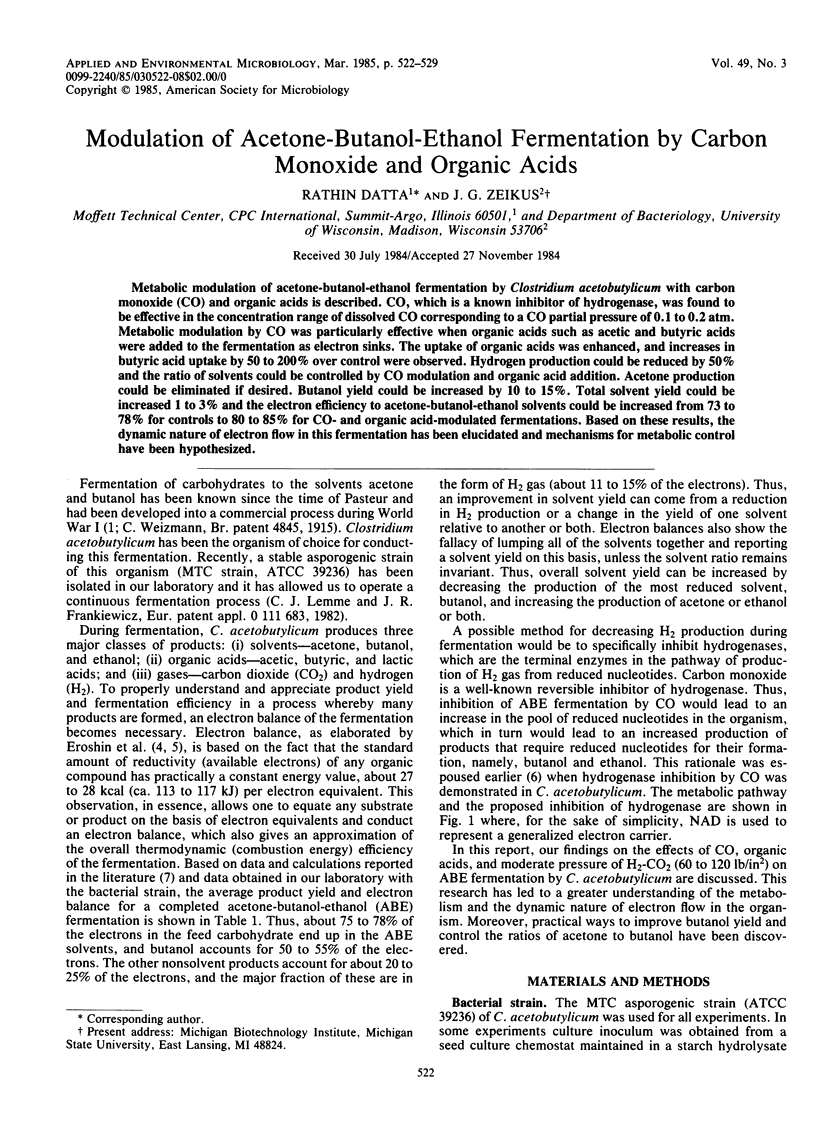

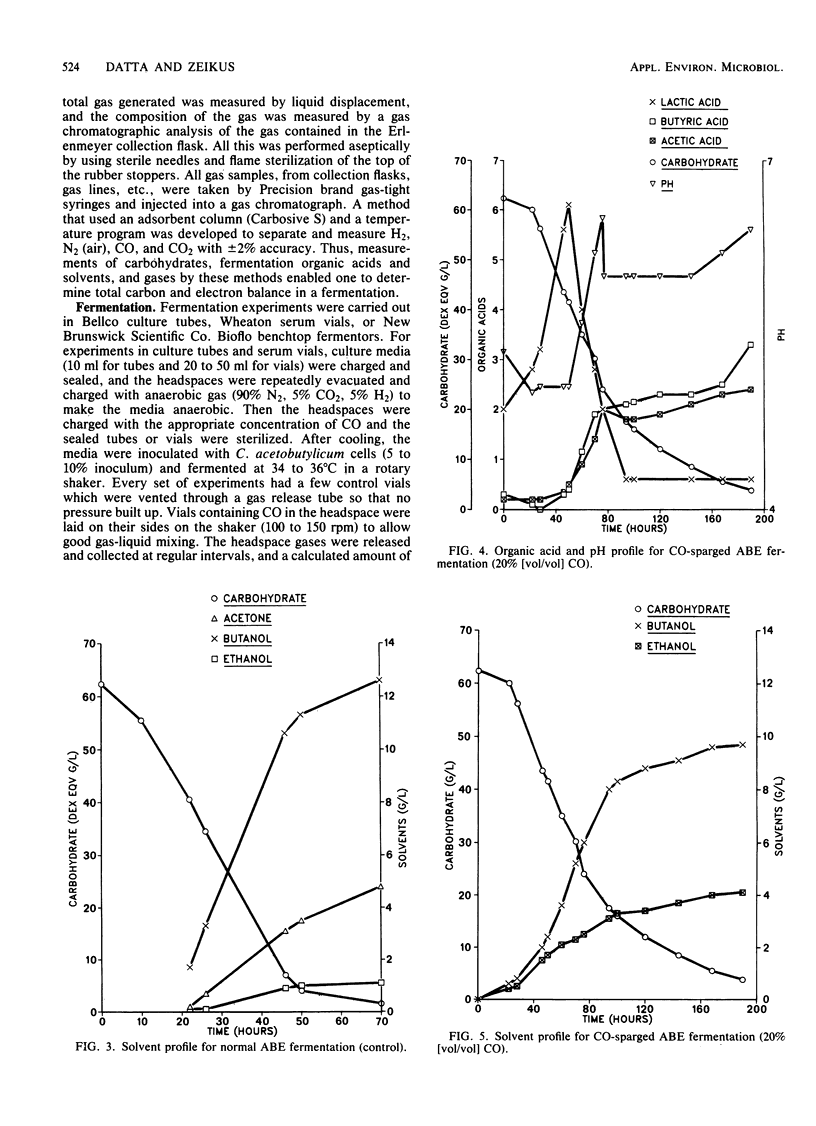
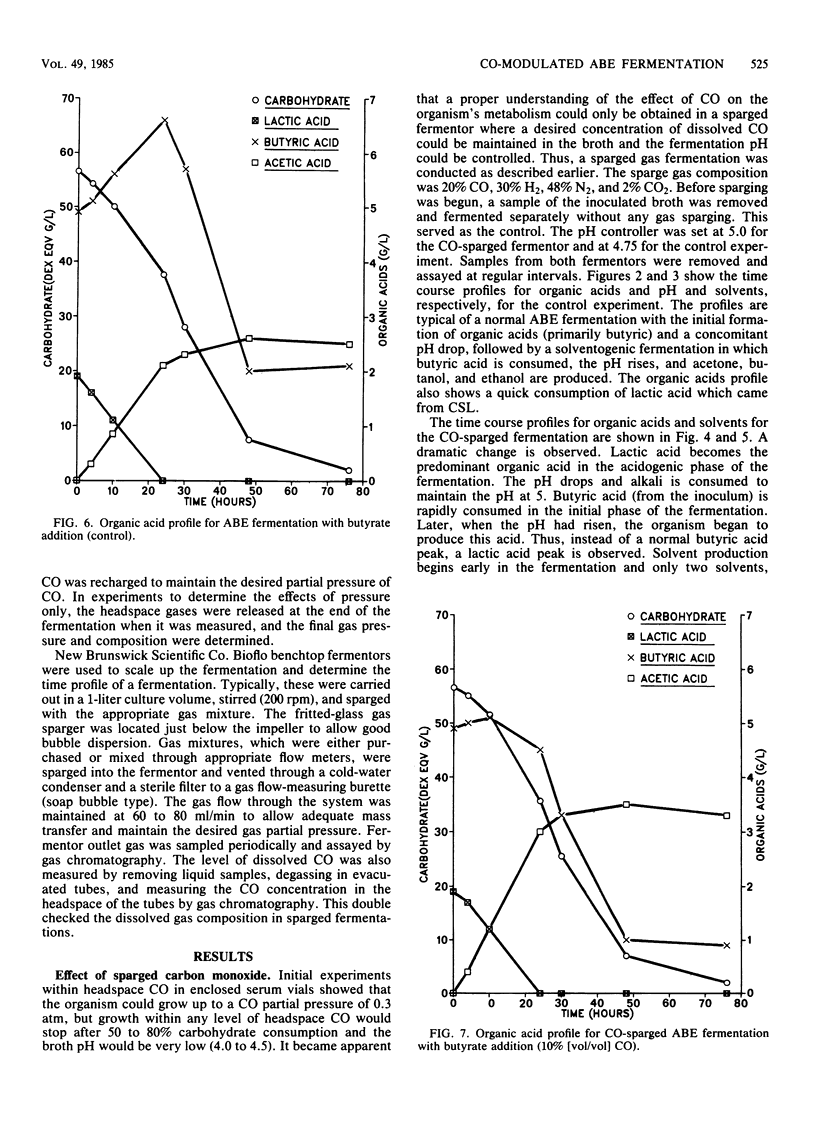
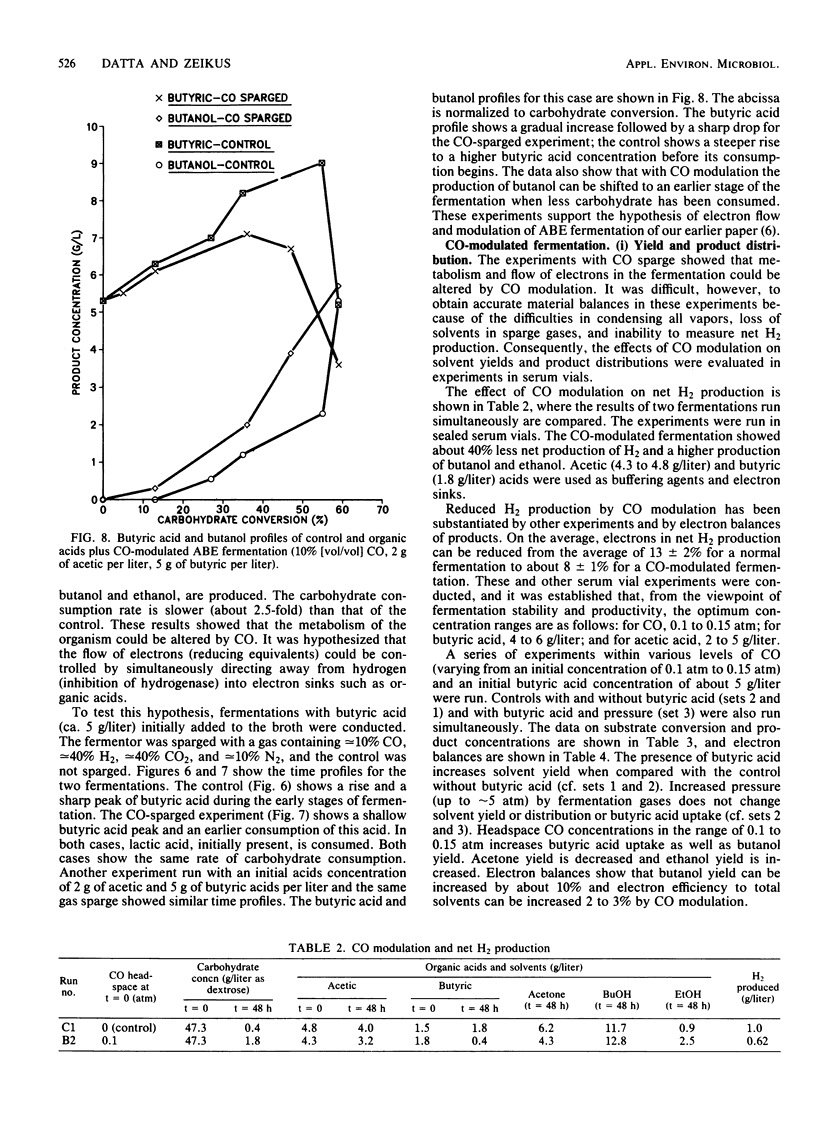
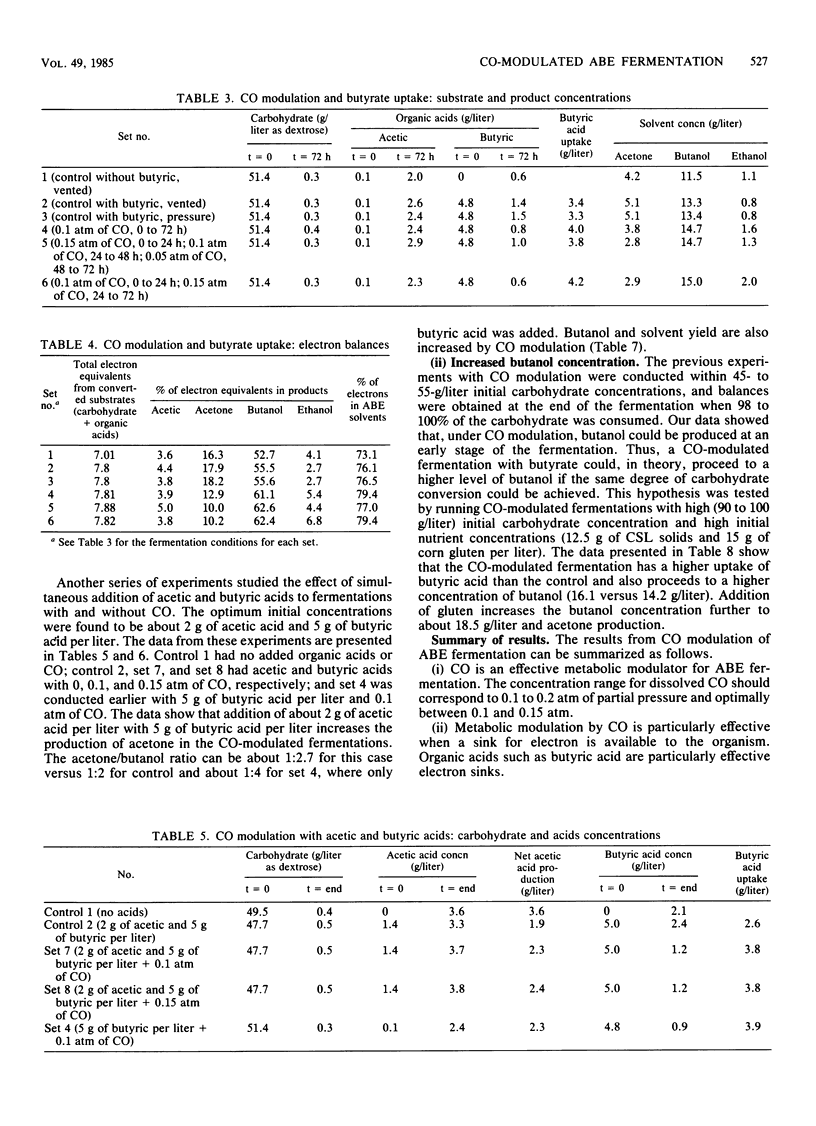
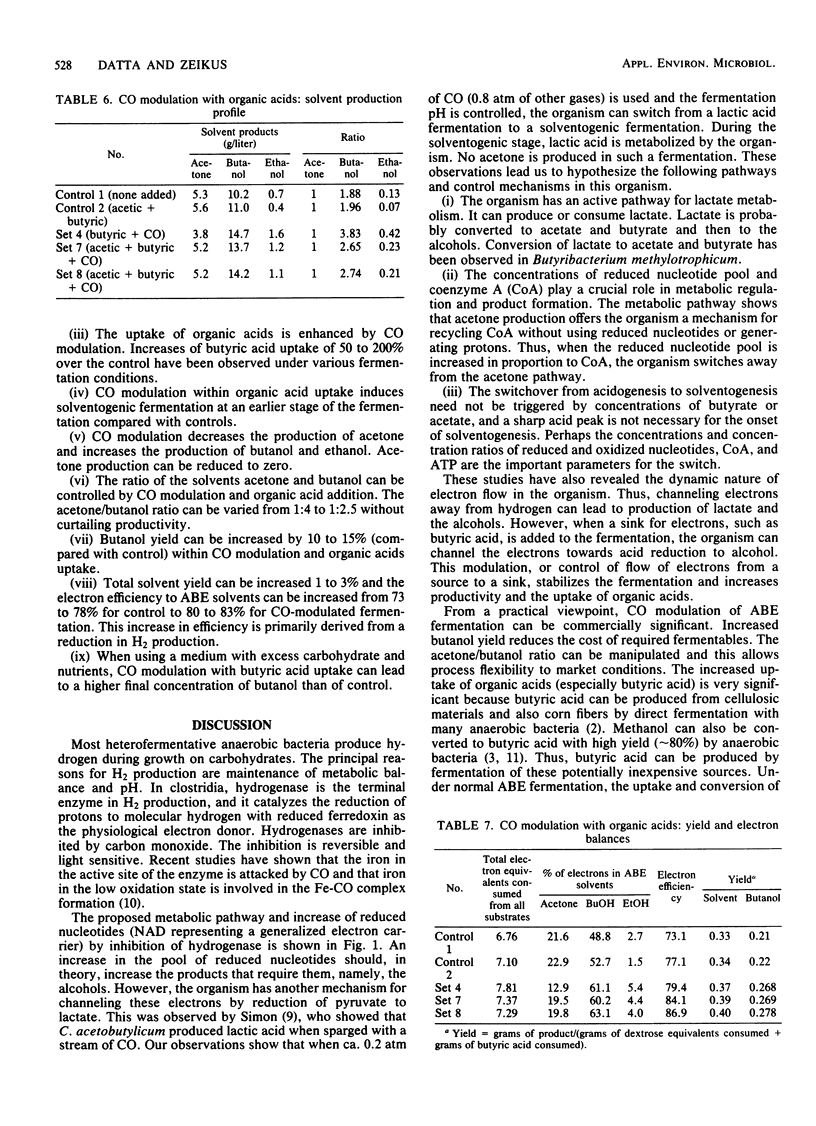
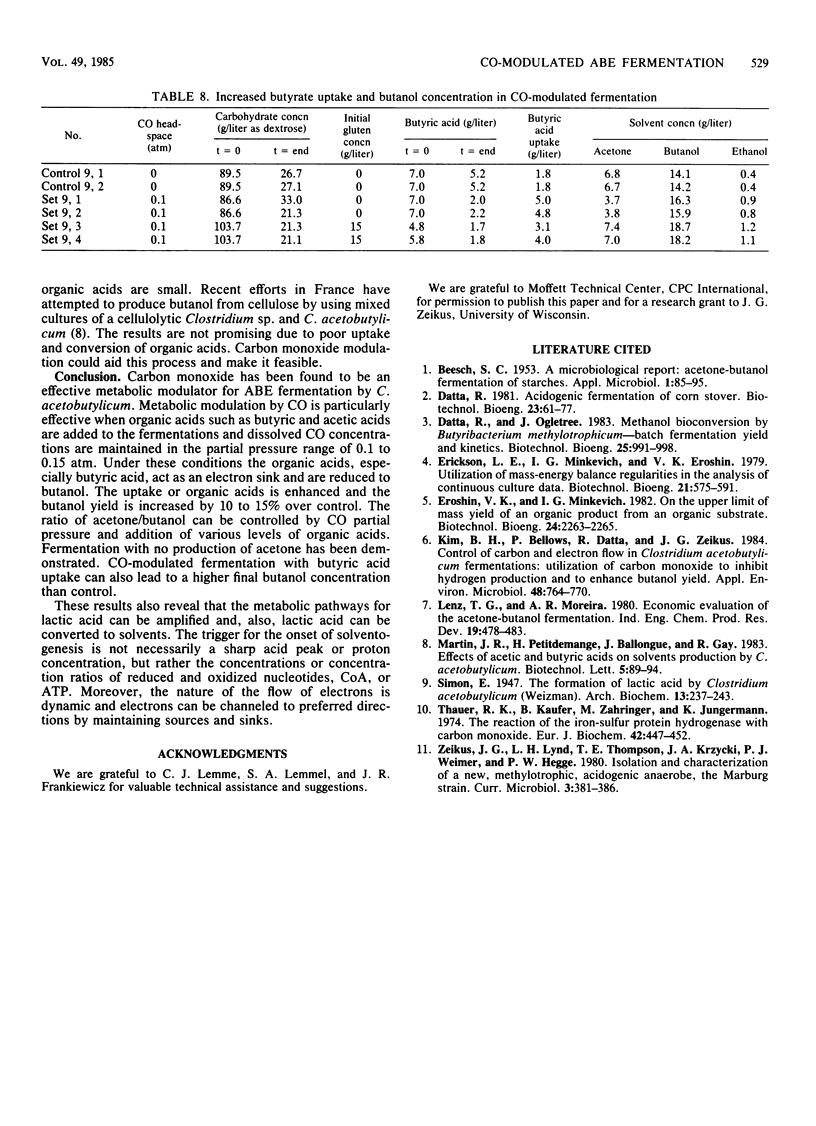
Selected References
These references are in PubMed. This may not be the complete list of references from this article.
- BEESCH S. C. Acetone-butanol fermentation of starches. Appl Microbiol. 1953 Mar;1(2):85–95. doi: 10.1128/am.1.2.85-95.1953. [DOI] [PMC free article] [PubMed] [Google Scholar]
- Kim B. H., Bellows P., Datta R., Zeikus J. G. Control of Carbon and Electron Flow in Clostridium acetobutylicum Fermentations: Utilization of Carbon Monoxide to Inhibit Hydrogen Production and to Enhance Butanol Yields. Appl Environ Microbiol. 1984 Oct;48(4):764–770. doi: 10.1128/aem.48.4.764-770.1984. [DOI] [PMC free article] [PubMed] [Google Scholar]
- Thauer R. K., Käufer B., Zähringer M., Jungermann K. The reaction of the iron-sulfur protein hydrogenase with carbon monoxide. Eur J Biochem. 1974 Mar 1;42(2):447–452. doi: 10.1111/j.1432-1033.1974.tb03358.x. [DOI] [PubMed] [Google Scholar]


